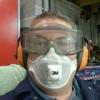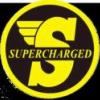Help On Engine Build
#16

Posted 30 January 2013 - 10:06 PM
AC
#17

Posted 30 January 2013 - 10:28 PM
Doing it properly is why properly built engines take a lot of man hours.
If an engine build company seem too cheap, it is probably because they do not do these steps and just 'throw' the engine together.
When it is suggested that a full engine build can easily take 30 to 40 man hours, or even a lot more for a full competition engine, the response is that they can't afford that number of hours.
When I built my Endurance Rally 1330 cc engine for a 1991 Cooper 1275 I had to 'blueprint' it because the regs demanded a standard engine. It took me almost 65 man hours, but it was a very good and ultra reliable engine. Imagine having to pay for that at £55 per hour or thereabouts!
#18

Posted 30 January 2013 - 10:51 PM
I also checked the checked the centre main With a dti before putting the cap on to make sure the crank didn't resemble a banana. I'm told that the heat treatments can some times mean they need straightening after? I also checked the bearing clearance and I will again on the final build with the old plasti Guage. It seems you can do enough checking... There seem to be loads of hidden tips. I would recommend Des's book for things like using two feeler gauges when torquing up the rod caps to stop the moving...
You not wrong on the hours... The cleaning alone had taken many up.... ESP of your doing the box at the same time. Quality fasteners seem like a very good investment.
If you are new to building engines it's worth remembering that the crank will turn most easily at TDC abd BDC to around 30 degrees either side of that in rotational terms. Then, at halfway up/down the bore, the piston drag will be greatest and the crank will be much harder to rotate, usually needing a screwdriver through the slot at the end of the crankshaft. It seems even harder once the cam and timing gears are installed.
Most people fit the crank first, torquing main no.1 and checking the ease of rotation, then main no.3 and finally the centre main. Then do the big ends in sequence, checking rotation after each one is torqued and remembering that they turn easiest at TDC/BDC. A newly bored engine with new pistons and rings can seem quite tight at mid-stroke, but so long as piston fit and ring gaps were correct then that is no problem.
#19

Posted 30 January 2013 - 11:02 PM
Checking crank straightness by only fitting mains 1 & 3 and using a DTI on the centre is a good idea if the crank is suspected of being 'bent'.
It's all a question of how many man-hours you have for doing the job. If it's for a customer they simply won't be willing to pay for this type of accuracy. In fact I used to build quite a few engines when I first retired from having a 'proper' job, but I got a bit fed up with Mini owners asking 'how cheaply' could I do an engine for them.
I just build a few for my friends and friends of friends these days.
#20

Posted 30 January 2013 - 11:10 PM
Are we friends?I just build a few for my friends and friends of friends these days.
#21

Posted 30 January 2013 - 11:15 PM
Are we friends?
I just build a few for my friends and friends of friends these days.
You never know
1 user(s) are reading this topic
0 members, 1 guests, 0 anonymous users

















